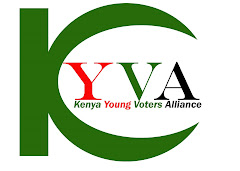KYVA is a conglomerate of organizations and individuals committed to ensuring that Kenya as a country manages to achieve set developmental goals to meet both the international and national targets. The idea was mooted by the (SONU) leadership of 2003/4. KYVA leadership is composed of diverse backgrounds and experiences. We urge all Kenyan youths to take charge of leadership at the counties and national levels. Register as voters and vote in large numbers for young visionary leaders.
Sunday, June 27, 2010
CUMULATIVE IMPROVEMENTS SALIENT CAVEAT FOR ASSESSING SCHOOLS` PERFORMANCE.
Education experts do not agree on much in education, but there is one point on which they agree: having an effective teacher is the single most important school ingredient to a child's learning success.
But the problem again lies in the identification of the specific benchmarks used in the selection such effective teachers. The government has over time relied on the often deceptive summative national examination results in determining and rewarding teachers whose students post impressive scores in the examinable subjects. The Ministry of basic Education and TSC has promoted such teachers to higher job groups while those in low socio-economic schools (most of which are in rural and hardship areas) lag in promotions because their schools fail to post impressive scores in the same examinations.
However, over the years it has become increasingly clear that stakeholders in the basic education sector are not in agreement as to what factors determine the competence of effective teachers or how effective teaching can be evaluated and given recognition.
In my opinion, a teacher`s competence must be measured based on three distinct aspects of students` achievement. These include: current levels of the students` performance, students` improvements over time, and achievement equity where students` results are weighted against schools` socio-economic status. Over time it has become crystal clear that the so called “best performing schools” fair badly on these caveat.
A more thorough reading of the results presented in such National summative examinations provides a more nuanced perspective on the educational condition of the nation. For example, teachers in national schools have always been ranked as effective basing on the fact that their schools are ranked first in the summative national examinations, however, the same schools will rank poorly in terms of cumulative improvements in the four year period since KCPE.
When using this new format, it will for instance be unsurprising that despite average or below-average current achievement in summative national examination, a village school in a hardship area like central Pokot is likely to be ranked among the top performing schools nationally as a result of very strong improvements on students` entry behavior in the four years. It is therefore incumbent upon the government and TSC to credit a teacher handling such students. This is because the teacher is effective in content delivery and is in fact also effective in terms of maximizing on the limited resources available to add value to students` entry behavior within a four year period.
I therefore commend the Head teachers who in their just concluded conference in Mombasa identified this caveat as particularly salient for quality assessment in schools` performance. It has made the public to realize the fact that national schools (most of which are blessed with abundant resources) do not necessarily outperform the so called village schools/third world schools.
TOME FRANCIS,
BUMULA.
http://twitter.com/tomefrancis
Subscribe to:
Post Comments (Atom)

1 comment:
Nice content. Thank you for your information.
Post a Comment